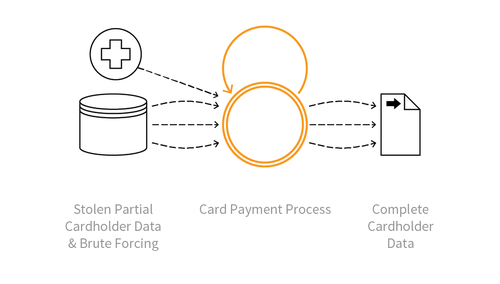This site is the archived OWASP Foundation Wiki and is no longer accepting Account Requests.
To view the new OWASP Foundation website, please visit https://owasp.org
Difference between revisions of "OAT-010 Card Cracking"
(New page) |
(→Indicative Diagram) |
||
| (One intermediate revision by the same user not shown) | |||
| Line 19: | Line 19: | ||
===Indicative Diagram=== | ===Indicative Diagram=== | ||
| − | + | [[File:OAT-010_Card_Cracking.png|500px|link=]] | |
=== Description === | === Description === | ||
| Line 43: | Line 43: | ||
* 210 Abuse of Functionality | * 210 Abuse of Functionality | ||
| − | === CWE Base / Class / Variant | + | === CWE Base / Class / Variant IDs === |
* 799 Improper Control of Interaction Frequency | * 799 Improper Control of Interaction Frequency | ||
* 837 Improper Enforcement of a Single, Unique Action | * 837 Improper Enforcement of a Single, Unique Action | ||
| − | === WASC Threat | + | === WASC Threat IDs === |
* 11 Brute Force | * 11 Brute Force | ||
Latest revision as of 15:08, 16 February 2018
This is an automated threat. To view all automated threats, please see the Automated Threat Category page. The OWASP Automated Threat Handbook - Wed Applications (pdf, print), an output of the OWASP Automated Threats to Web Applications Project, provides a fuller guide to each threat, detection methods and countermeasures. The threat identification chart helps to correctly identify the automated threat.
Definition
OWASP Automated Threat (OAT) Identity Number
OAT-010
Threat Event Name
Card Cracking
Summary Defining Characteristics
Identify missing start/expiry dates and security codes for stolen payment card data by trying different values.
Indicative Diagram

Description
Brute force attack against application payment card processes to identify the missing values for start date, expiry date and/or card security code (CSC), also referred to in many ways, including card validation number 2 (CVN2), card validation code (CVC), card verification value (CV2) and card identification number (CID).
When these values are known as well as the Primary Account Number (PAN), OAT-001 Carding is used to validate the details, and OAT-012 Cashing Out to obtain goods or cash.
Other Names and Examples
Brute forcing credit card information; Card brute forcing; Credit card cracking; Distributed guessing attack
See Also
Cross-References
CAPEC Category / Attack Pattern IDs
- 112 Brute Force
- 210 Abuse of Functionality
CWE Base / Class / Variant IDs
- 799 Improper Control of Interaction Frequency
- 837 Improper Enforcement of a Single, Unique Action
WASC Threat IDs
- 11 Brute Force
- 21 Insufficient Anti-Automation
- 42 Abuse of Functionality